Did you know that roughly 80% of profit-making embroiderers digitize on caps? Caps are not only a staple of the embroidery business, but they are also among the many clothing articles we embroiderers get to have fun and be creative with. Why not take the time to learn how to embroider on them, whether for business or pleasure?
Generally speaking, embroidering on beanies or toques is similar to embroidering on any other piece of fabric, so this article will specifically narrow in on embroidering on caps.
This article will teach you what you need to know to embroider on hats and caps properly. We will discuss:
- Cap and hat terminology
- Different hats for embroidery
- How to embroider a cap hat (placements, stabilizers, tips, etc)
- How to properly hoop cap hats
- Digitizing tips to give you the best-embroidered results.
Let’s dive in!
Cap & Hat Terminology for Embroidery
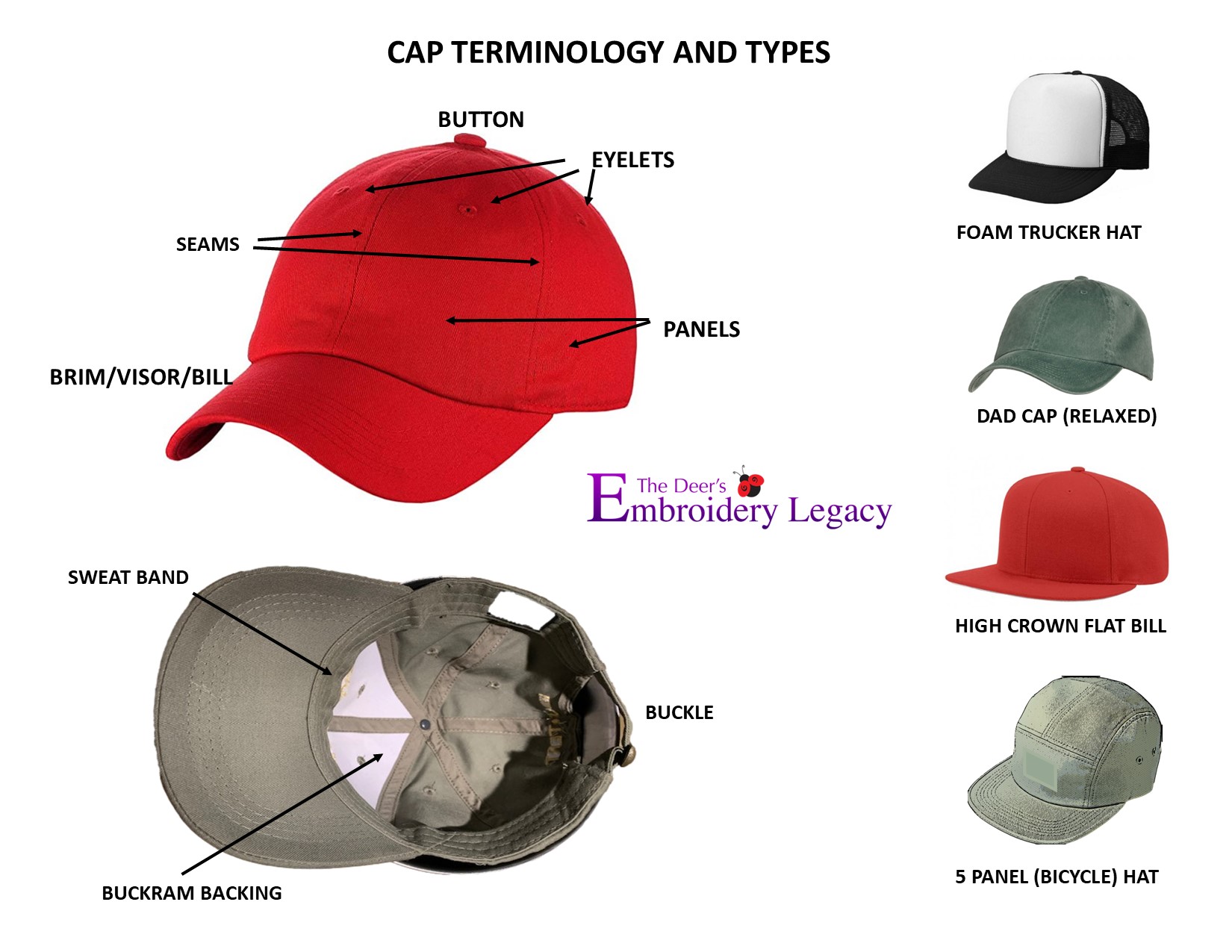
Crown
The cap’s crown is made up of 4, 5, or 6 panels. The most common configuration is the 6-panel cap commonly found in baseball caps.
Visor
Also called a brim, bill, or visor. These can be flat with squared-off or round shapes or curved. Generally, it is a piece of plastic or cardboard covered in fabric. This is then stitched with decorative stitching to help keep its shape. Embroidering on the visor is a careful process. Please consider your machine before starting a design on the visor.
Button
The button holds the panels together. It can be metal or plastic, which has been covered with fabric.
Buckram
Is the backing you see on the reverse of the front panels. This stiffens the twill fabric and gives a solid base for embroidery. Buckram is a cotton fabric stiffened with a stabilizer, but it can also be made of plastic mesh. When using the caps with plastic mesh, use less dense designs as these can create bullet-proof areas which can break thread or needles.
Sweatband
- The sweatband that surrounds the cap’s inside absorbs moisture and protects the outside from stains. When embroidering, make sure to turn the band back, so you are not embroidering over it, as this will make the hat uncomfortable, reduce how well the band works and create very dense areas.
Eyelets
- Are the small embroidered holes on the top of the cap. These are for ventilation but can be excellent guides for your embroidery placement.
Closure
- Closures can come in an adjustable buckle, such as velcro. Some fitted caps come pre-sized and do not require an adjustment. The curved opening in the rear of the cap is a great place for names, teams etc. These are wonderful selling points.
Choosing Your Cap Hat for Embroidery
Ball caps are all about variety. You look at a cap catalog or website and there are hundreds if not thousands of choices. You have your choice of color combinations, material, the height of the crown, type of bill, back closures and the list goes on and on. While there are hundreds of different hat styles and manufacturers out there, most hats generally fall under 3 main categories:
1. OPF (One-piece front) hats for embroidery
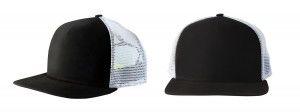
OPF usually categorize as “trucker/farmer” hats. These hats have one piece of foam laminated backing (gives the hat structure), and the rest of the hat is more of a mesh material. OPF hats are usually pretty easy to hoop and embroider because of their laminated backing, and there is no center seam in the hat.
2. Varsity/collegiate hats for embroidery
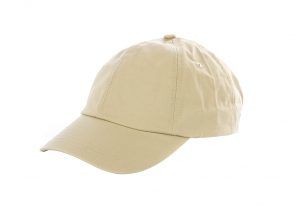
Varsity hats tend to fit a little closer to the head because they do not have any laminated backing (structure) on the front of the panel. Because of this, these hats do tend to move a little bit, which is why making sure hooping is done properly is so important.
3. Sports caps for embroidery
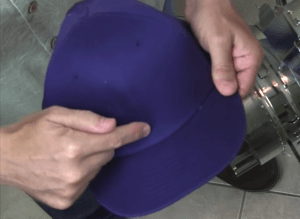
Sports caps are generally the most popular style of hat, especially for embroidery. This hat has a center seam down the middle of the front panel (Aka: the Bermuda triangle of embroidery. You generally tend to lose stitches in the center seam) and a laminated backing giving it structure.
How To Embroider Cap Hats
When embroidering caps, there are various placement options. Some options are limited to embroidering before manufacturing (for example, the bill). But there are plenty of options for an embroiderer to consider. Most multi-needle embroidery machines can handle the front, both sides, the back of the cap, and even most places in between.
The most common area embroidered is the front of the caps. Even the most basic cap frames are designed to do the front of caps. Today, most commercial embroidery machines utilize wide angle cap frames designed to go most of the way around the cap, typically 270º of rotation. This will handle not only the front of the caps but also the sides. That leaves the back, for which most embroiderers use a traditional round hoop.
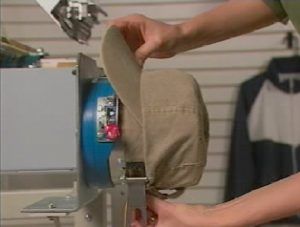
Here we want to look at each location and see what needs to be done for the best results. While the cap’s makeup does play a big part in how each cap is framed, the basic principles will work regardless of the type of cap. Let’s start with the front and center.
Machine embroidering the front and center of hats
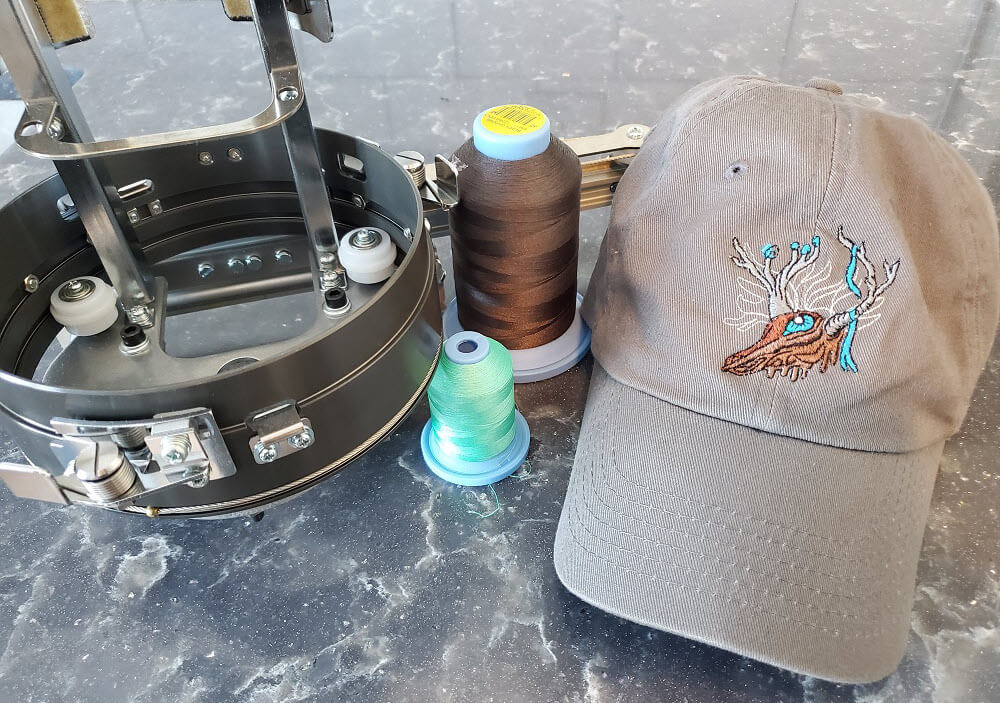
The front of a cap is the most common placement and probably the easiest placement to sew. As mentioned, all cap frames are designed to embroider the front of the cap, if nothing else. The main variance with ball caps is whether or not the front panels are structured or not. Structured caps typically have a fused buckram backing inside, making the crown of the cap stand up. Unstructured (varsity & collegiate style hats) do not have this and tend to be more floppy.
For unstructured caps, it’s important to use cap backing (stabilizer). Cap backing is a stiff and heavy tear away. It provides stabilization for the fabric for unstructured caps and helps hold the shape of the cap while it’s embroidered. Structured caps don’t need the backing as the fused buckram acts as the stabilizer.
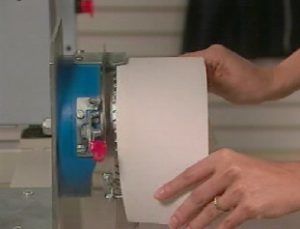
Then you have some in-between styles like soft buckram or even foam-backed caps. For caps like these, using a piece of cap backing is recommended and yields excellent results.
When doing front only placements on structured caps, it’s not always necessary to put the back clip on the frame of wide-angle caps frames. In fact, for larger designs, it’s often advantageous to leave the back clip off for these types of caps. It gives a little flexibility to the cap and prevents distortion of the design at the top of the design.
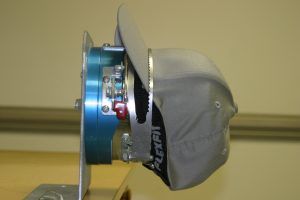
Machine embroidering the side of hats
For side placements, you must utilize the back clip. The primary purpose of the back clip(s) is for side placements on caps. Wide-angle cap frames vary from brand to brand. The main difference is the back clips, as some have one large clip or one on each side of the back. Most brands use multiple clips that look a lot like binder clips from an office supply store. Whatever the type of clip, it’s important to use them when sewing side placements on caps. Otherwise, the design will look like it’s running downhill.
While cap backing may be optional for front placements on certain caps, it’s a necessity for side placements. There is no fused buckram on the sides of caps and, therefore, must be stabilized. For normal twill caps, a single piece of cap backing will work just fine.
The same goes for a mesh cap. Yes, it’s possible to sew on mesh caps with the proper stabilization. The backing provides the necessary material to hold the stitches together. For this reason, we recommend a cutaway stabilizer.
It can sometimes be tricky to get the backing to stay in place on the side while hooping the cap. The tendency would be to tuck it under the frame. While that holds it in place while on the framing device, the backing will fall right out afterward as it is not being held in place by the frame. The cap has to be hooped with the backing on top of the frame.
One way to overcome this hassle is by placing a piece of double-sided tape (such as carpet tape found at most home improvement stores) on the side of the cap frame. Then peel the backing paper off and stick the cap backing onto the tape. This will secure the hold the backing in place long enough to get the cap hooped but pulls off easily from the frame.
Embroidering the back of hats
Placements on the back of caps are relatively straightforward. There are several attachments on the market to assist with this placement, but a simple solution to cap back is to use a conventional small round hoop. Most machines come with a 12cm or 4.5 round hoop, which is the perfect size to fit the back of a cap, especially those with openings. The back of a cap can be hooped on a table corner if necessary, eliminating the need for any special hooping devices.
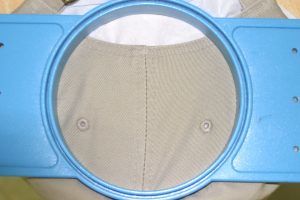
To align the back, use the marks that are typically molded into the hoop. The center seam aligns with the marks at 12 and 6 o’clock. The edge of the opening aligns with the other marks.
To stabilize the back, be sure the piece of backing covers the entire hoop. The cap back will not cover the whole hoop, but it needs to cover the whole hoop for the backing to provide great stabilization.
How to Hoop Cap Hats for Embroidery
Subscribe to our YouTube channel now for more great embroidery tips & tricks by clicking here!
To start embroidering on your hats and caps, they will need to be hooped properly. Whether you’re new to embroidery or an experienced embroiderer, I’m sure we can all agree that hooping caps can be difficult, especially without proper instructions. I frequently see people post about their failed embroidery hat projects, asking what went wrong, and often end up blaming their machines. Little do they know that if their cap isn’t hooped correctly, it can lead to disastrous results. As with any embroidery project, if your hooping isn’t clean, your embroidery won’t be either.
Let’s go over a hooping technique for caps/hats that the Embroidery Legacy used on our caps while running two of North America’s largest embroidery production factories in the 1990s. Follow these steps to ensure your cap is hooped properly. Before we get started, it’s important to understand that you will need a cap hooping accessory. This accessory consists of 3 main components:
- Driver: the driver fits right over the top of the arm of the machine.
- Cap frame: the cap frame is what your hat will be attached to.
- Jig: the jig attaches the cap frame for more accurate hooping.
1.Driver: the driver fits right over the top of the arm of the machine.
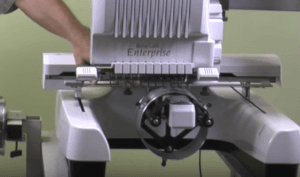
2. Cap frame: the cap frame is what your hat will be attached to.
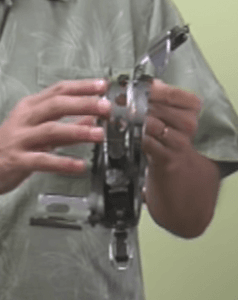
3. Jig: the jig attaches the cap frame for more accurate hooping.
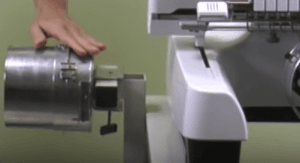
How to hoop your hat:
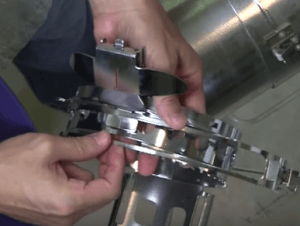
Step 1: Making sure your cap frame is properly secured to the jig. You will know it’s secure because it will click into place and will have no, to hardly any, wiggle room.
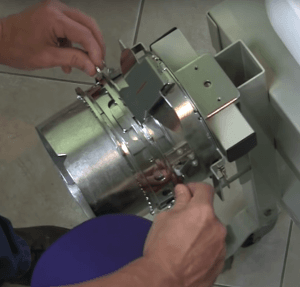
Step 2: We want to get the cap frame into position for our hat. We’ll start by moving the peak mount out of position as well as the band.
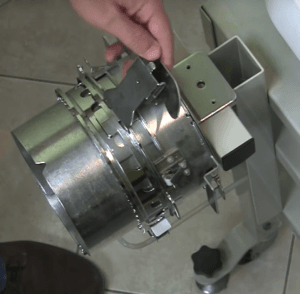

Step 3: Now that the jig is ready for hooping, we need to prepare the hat itself. We’ll start by moving the band on the inside of the cap out of the way, as the band will be placed underneath the plate on the jig. (Be sure to try and align the red line to the center seam)


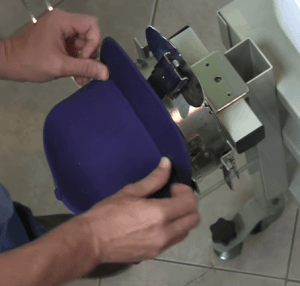
Step 4: As our hat is on the cap frame and the band of our hat is securely in place, we’re going to take the cap frame band/strap and secure it so the teeth of the band lines up to the base of our cap. Once in position, push the strap down to lock it. Be sure there is no excess space where the peak of the hat meets the crown.
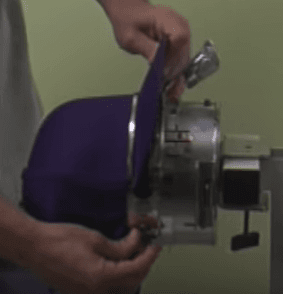
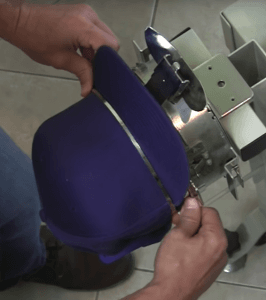
Step 5: For our final step, we’re going to start by placing material over the peak of the hat to avoid unwanted markings on our cap (hats are generally one of the hardest materials to get hoop burn out of). Once the material is in place simply engage the peak mount to ensure the peak of the hat won’t hit the machine while it’s embroidering.
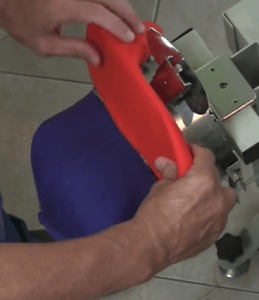
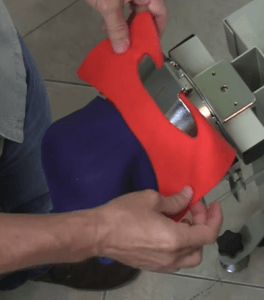
Your hat is now successfully hooped.
Embroidery Designs for Hats and Caps
Always remember, a hat needs to be hooped properly to run successfully on a machine. But what is equally or even more important is that the embroidery design is digitized specifically knowing that it will be embroidered on a curved surface.
Designs need to be digitized specifically for caps for best results. Most experienced digitizers will take into account a design that is size friendly for a finished hat and digitize it accordingly.
Digitizing Embroidery Designs for Cap Hats
If you don’t find the design you’re looking for or don’t want to spend the money outsourcing your designs, why not digitize it yourself? If you’re unfamiliar with embroidery digitizing, check out our What is Embroidery Digitizing Article.
When digitizing designs for caps and hats, there is one rule you should always follow.
You always want to start digitizing from the bottom up (from the peak of the hat, up to the crown); otherwise, your stitching will buckle over, and you will get poor results. You also want to start digitizing from the inside out (start from the center of the cap and proceed outward), ensuring no buckling will occur.
There are many other things to consider when digitizing a cap, such as changing the underlay, why you need to overlap satin stitches, fixing hat embroidery designs, separating and gaps between objects, and sew much more.
To get answers to all these questions and more, check out our Youtube video tutorial on digitizing hats and getting help with your hat embroidery. Click here to watch now.
Although the front of a cap is usually most popular, what about when you want to digitize the back of a cap? You want your lettering to line up just perfectly, but with different styles of hats, what can be done? Watch the video below as we explain a few simple steps to follow so you can create a template and create your perfect design.
Don’t Have A Multi-Needle Embroidery Machine or Cap Attachments? You Can Still Embroider Hats!
If you have a flatbed or single needle embroidery machine, you might be wondering “can I still embroider on hats”? The answer is yes! With this creative workaround. Why not instead use custom embroidery patches and attach them to the cap?
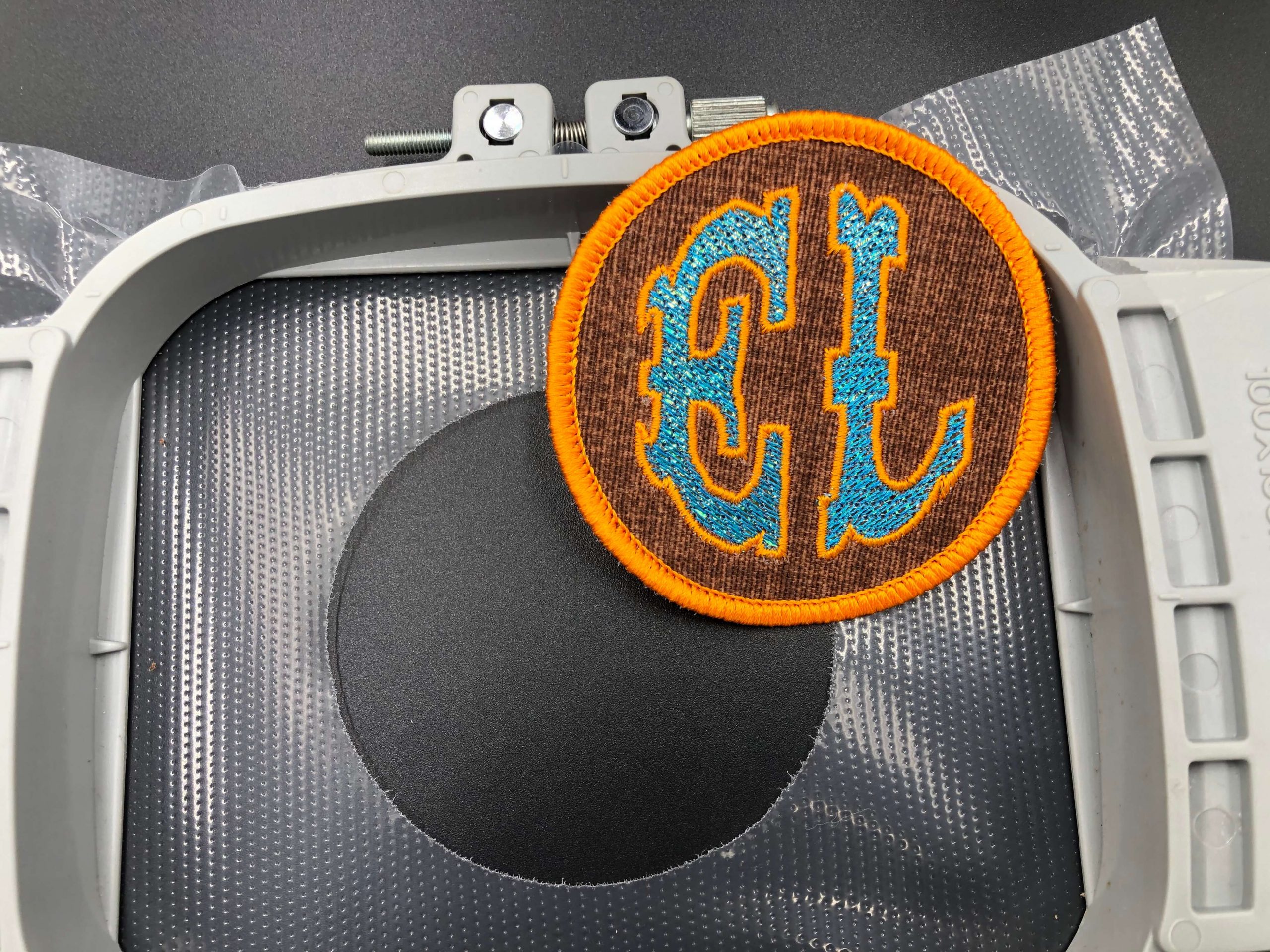
Patches include a crisp merrowed edge, mimicking using a “merrow machine.” Inside these merrow edges, you can insert designs or lettering to easily create a personalized patch with any material of your choice. These patches can then be easily attached to your cap when using Post-Patch Iron-On Seal. Click here to see our suggested supplies and materials to use to create unique professional-looking patches for the best results on your caps.
Conclusion: Embroidering Hats Is Easy Using These Tips & The Right Software
Embroidering on hats can be both fun and profitable. Don’t forget it’s easiest to embroider on a cap when you have a cap frame and multi-needle. Utilizing the sides and backs of caps can provide coverage around the cap. That should satisfy even the most demanding of customers. Just be sure to follow the tips outlined above. As we know, hooping a cap can be difficult, but using the proper hooping accessories will make a world of difference! Follow our steps, and it’ll take away your frustration.
Remember the most important aspect of embroidering a hat—the embroidery! Ensure the design you stitch out is created for hats to avoid any troubles. If you want to create your designs, remember to use the bottom-up, center-forward rule.
Please note: This article was written by both John Deer & Steven Batts. Steven Batts, a consultant with over 23 years of experience in the embroidery industry, owns Righteous Threads, Greensboro, N.C., which offers digitizing, embroidery, and machine maintenance services. Steven regularly leads seminars at ISS shows and is an industry speaker and consultant.
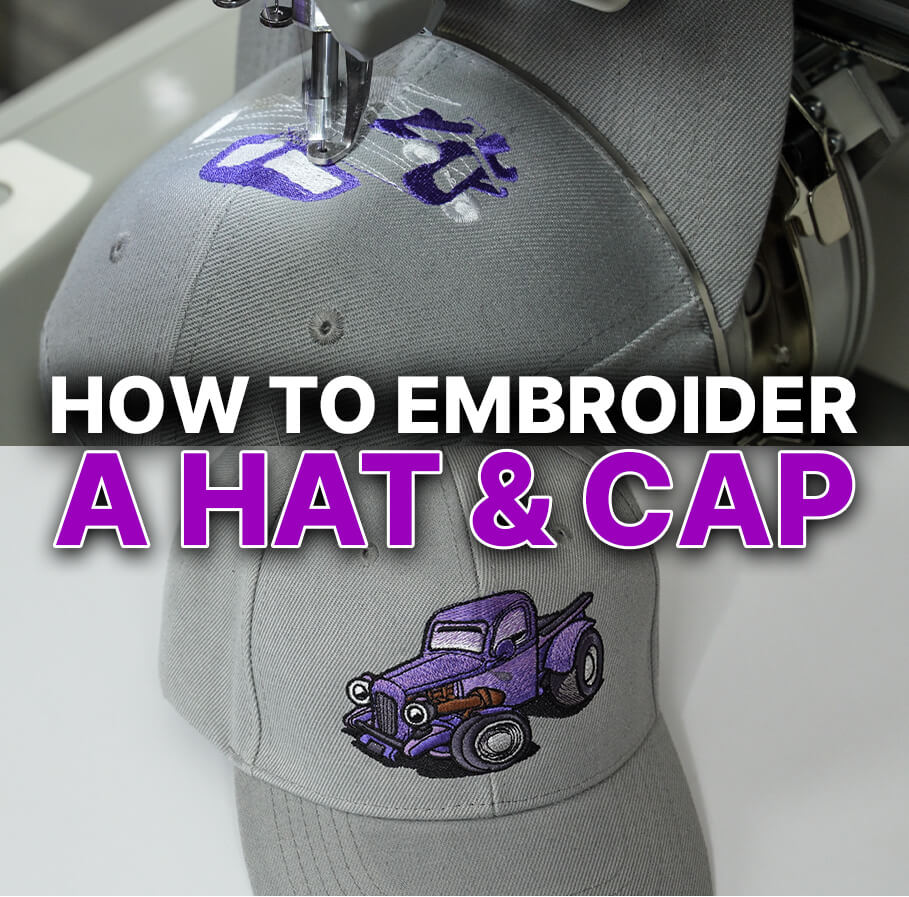
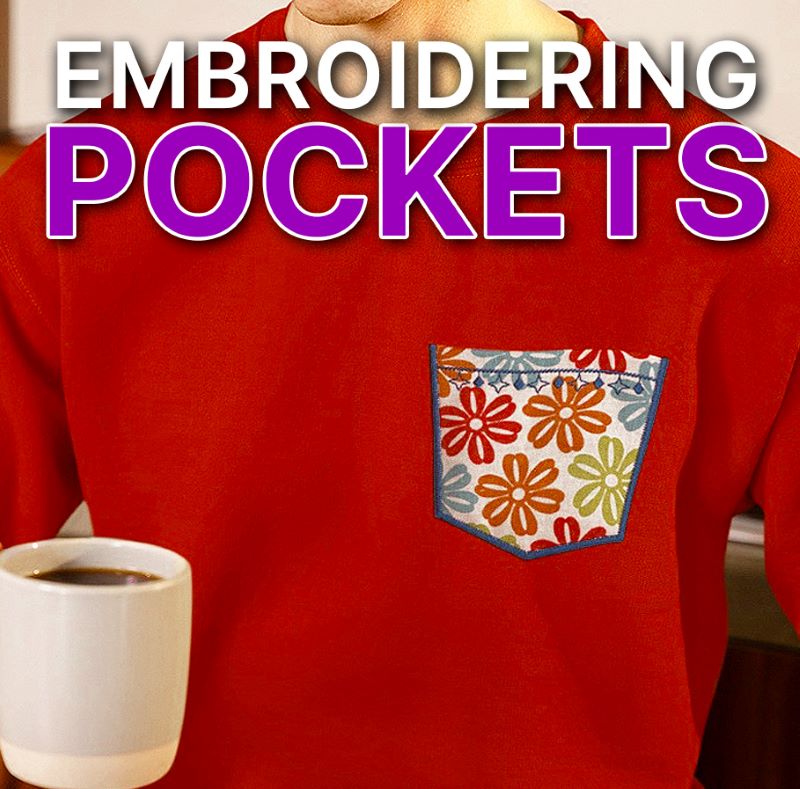


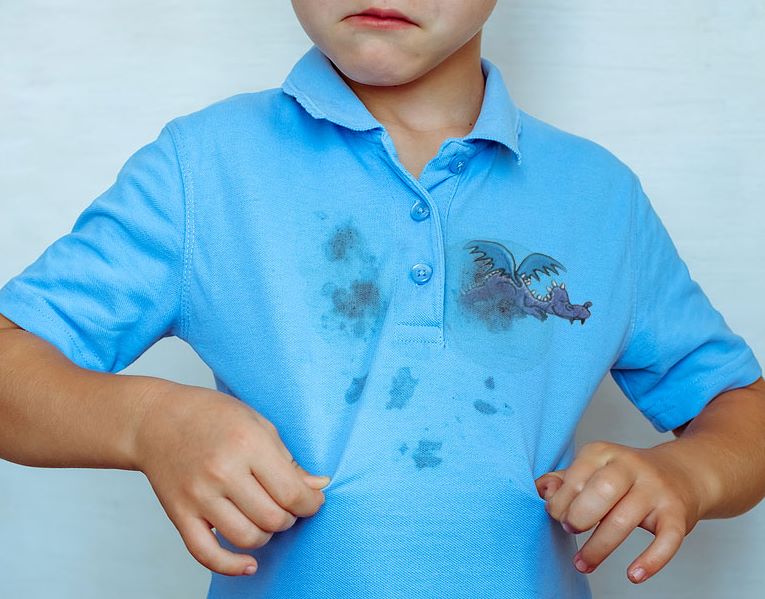



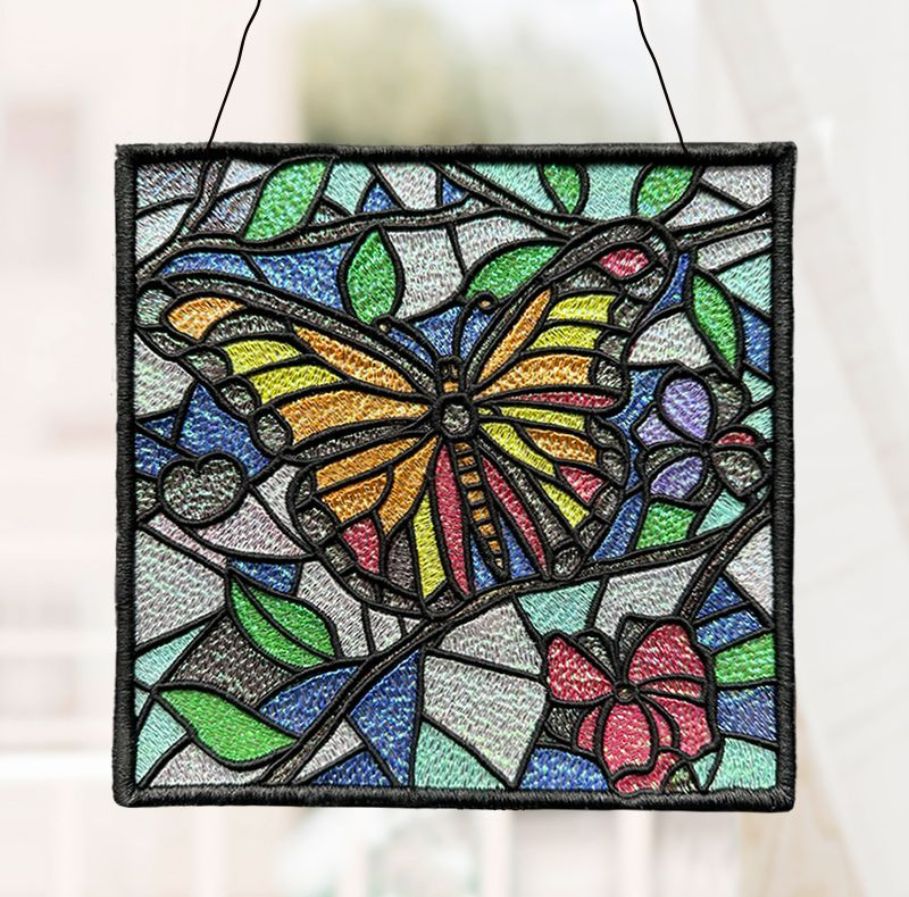

Hi John, I work as an Embroidery Designer and the company I work for have recently added caps into our product repertoire! I have read lots regarding the ‘bottom to top’ and ‘inside out’ rule – for the cap embroidery files should text be on an arc baseline for it to appear straight when the cap is worn? As we have had some caps where the text on a straight line looks to be lifted on one side after stitching – could this be as a result of not originally using the ‘inside out’ rule or should text be on an arc baseline? Many thanks.
Hi Ellie, generally, bottom-up inside out assists with reducing design movement on the curved surface. Hooping tightly where the crown meets the peak is also key. I suggest placing the cap on the head of a garment steamer right before hooping. It will soften the laminated buckram for a tighter fit.